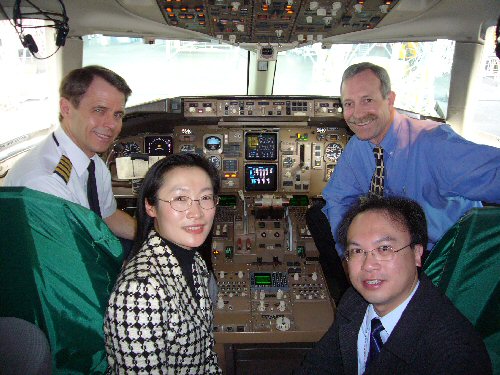World-first uplink of LIDAR wind shear alerts to the aircraft cockpit
27 March 2008
A trial of uplinking wind shear alerts generated by the LIght Detection And Ranging (LIDAR) to the aircraft cockpit - the first of its kind in the world - has recently been extended to become an ongoing programme at the Hong Kong International Airport (HKIA). This is a result of collaboration between Hong Kong Observatory (HKO) and the Northwest Airlines (NWA). In early March 2008, a media briefing was held to promulgate this successful story.
Currently, wind shear alerts are passed to pilots in flight via air traffic controllers or the Automatic Terminal Information Service through radio communications. With direct uplink of the alerts to the cockpit, the pilots are able to receive up-to-date wind shear information right in front of them when their aircraft is within some 30 minutes before landing or prior to take-off.
The collaboration started in 2006 when HKO tested an available technology to uplink wind shear alerts from the Terminal Doppler Weather Radar (TDWR) directly to NWA aircraft operating at HKIA. This was the first uplink of wind shear alerts in the Asia/Pacific Region. In 2007, wind shear alerts from the LIDAR were added to the uplink and HKIA became the first airport providing this new service to the aviation community. As the TDWR works best in rainy weather and the LIDAR detects wind shear in dry and fine weather, comprehensive wind shear information could now be provided to pilots via the HKIA weather uplink in all weather conditions.
Observatory's Senior Scientific Officers Sandy Song (front left) and BL Choy (front right), and NWA's Chief Pilot Steve Smith (back left) and Meteorologist Tom Fahey (back right) photographed in the cockpit of an NWA aircraft during the media briefing
